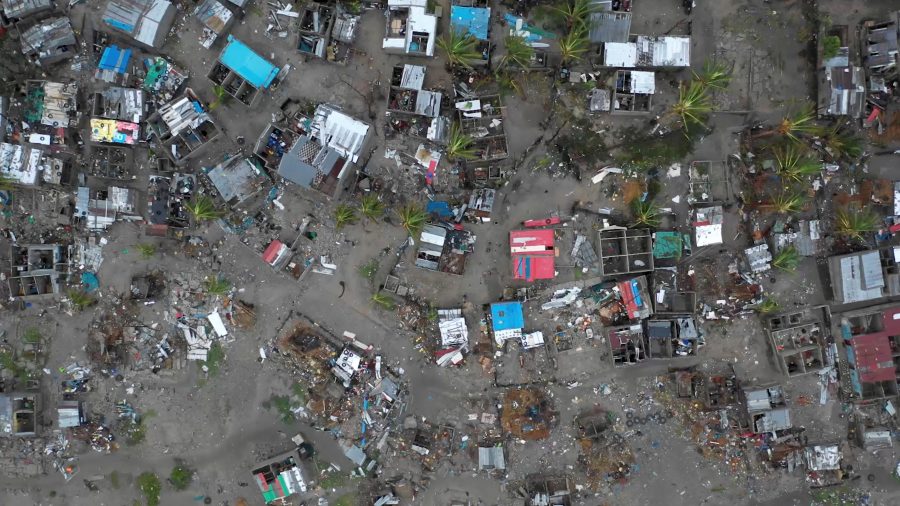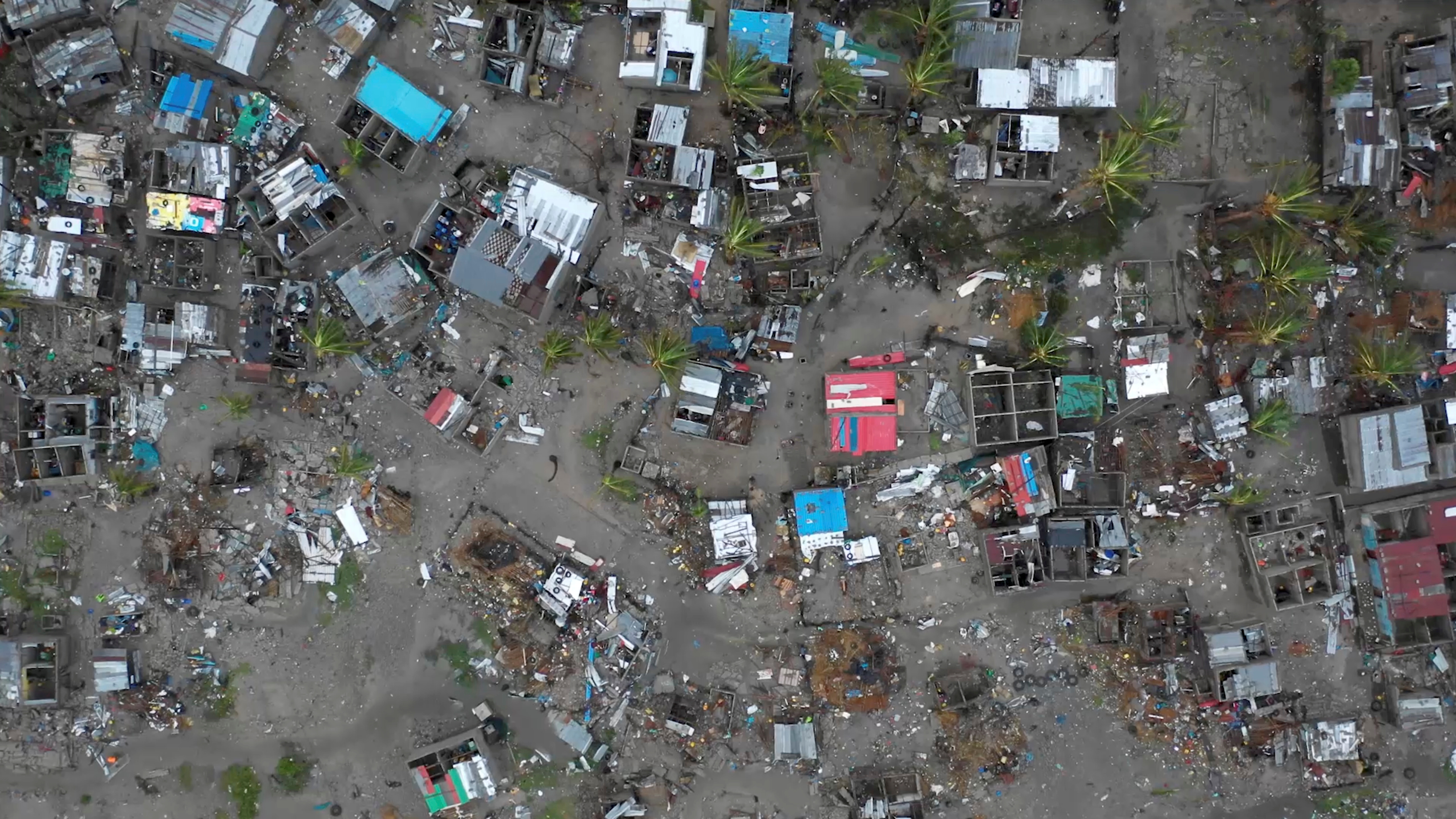
Cyclone Idai Death Toll May Exceed 1,000. Millions Affected in Africa by Record Disaster Says UN
MAPUTO/HARARE – Cyclone winds and floods that swept across southeastern Africa affected more than 2.6 million people and could rank as one of the worst weather-related disasters recorded in the southern hemisphere, U.N. officials said on Tuesday. Rescue crews are still struggling to reach victims five days after Cyclone Idai raced in at speeds of […]

MAPUTO/HARARE – Cyclone winds and floods that swept across southeastern Africa affected more than 2.6 million people and could rank as one of the worst weather-related disasters recorded in the southern hemisphere, U.N. officials said on Tuesday.




Rescue crews are still struggling to reach victims five days after Cyclone Idai raced in at speeds of up to 170 kph from the Indian Ocean into Mozambique, then its inland neighbours Zimbabwe and Malawi.
Aid groups said many survivors were trapped in remote areas, surrounded by wrecked roads, flattened buildings and submerged villages, while the Red Cross said at least 400,000 people had been made homeless in central Mozambique alone.
“This is the worst humanitarian crisis in Mozambique’s history,” said Jamie LeSueur, who is leading rescue efforts in Beira for the International Federation of Red Cross and Red Crescent Societies.
The organization said large areas to the west of the port city of Beira were severely flooded, and in places close to the Buzi and Pungwe rivers flood waters are meters deep, completely submerging homes, telephone poles and trees.
“The scale of suffering and loss is still not clear, and we expect that the number of people affected as well as the number of people who have lost their lives may rise,” LeSueur said.
The official death count in Mozambique stands at 84 – but its president Filipe Nyusi said on Monday he had flown over some of the worst-hit zones, seen bodies floating in rivers and now estimated more than 1,000 people may have died.
The cyclone hit land near Beira on Thursday and moved inland throughout the weekend, leaving heavy rains in its trail on Tuesday.
Studies of satellite images suggested 1.7 million people were in the path of the cyclone in Mozambique and another 920,000 affected in Malawi, Herve Verhoosel, senior spokesman at the U.N World Food Programme said. It gave no figures for Zimbabwe.




In Maputo, Mozambique’s capital, people were worried about relatives they had not heard from.
Telma fa Gloria, a street vendor, told Reuters she had not heard from her mother, who she usually speaks to every day, or her siblings, for days. Her mother’s neighborhood was in one of the worst-hit areas.
“I’m stitched up, with nothing to do,” she said, adding she was thinking of going to Beira to find out what had happened.
“I don’t have the strength to get the news I don’t want to hear, and I don’t wish anyone to hear.”
WORST FEARS
Heavy rains preceded the cyclone, compounding the problems.
“If the worst fears are realized … then we can say that it is one of the worst weather-related disasters, tropical-cyclone-related disasters in the southern hemisphere,” said Clare Nullis of the U.N. World Meteorological Organization.
Droughts are classed as climate-related not weather-related.
In Beira, a low-lying coastal city of 500,000 people, Nullis said the water had nowhere to drain.
“This is not going to go away quickly,” she said.





Mark Ellul, a 31-year-old British doctor from Manchester who was working at the Beira hospital when the storm hit the city on Thursday, was trapped in a hotel room. He said the hospital suffered significant damage.
“It was pretty terrifying during the storm, extremely noisy, frightening and you can hear the flying debris outside,” Ellul said.
“It felt like the windows were going to break, like the storm was going to come into the room.”
Beira is also home to Mozambique’s second largest port, which serves as a gateway to landlocked countries in the region.
The control room of a pipeline that runs from Beira to Zimbabwe and supplies the majority of that country’s fuel has been damaged, Zimbabwe’s Energy Minister Jorum Gumbo told state-owned Herald newspaper on Tuesday.
“We, however, have enough stocks in the country and I am told the repairs at Beira may take a week,” he was quoted as saying.
AID ON THE WAY
The European Union announced on Tuesday an initial emergency aid package of 3.5 million euros ($3.97 million) to Mozambique, Malawi and Zimbabwe for logistical support to reach affected people, emergency shelters, hygiene, sanitation and health care.
Britain has pledged up to £6 million ($7.96 million) in aid.
Citizens in Zimbabwe are mobilizing donations, including cash, food and clothes to help thousands of families whose homes were wrecked by the cyclone.
President Emmerson Mnangagwa, who visited Chimanimani on Tuesday, told reporters that Tanzania and the United Arab Emirates were also sending donations while neighbors, including South Africa, Botswana and Angola, would also help.
The South African National Defence Force (SANDF) has joined their Mozambican counterparts on the ground to help with the searches and air resources including helicopters and airplanes.
In a statement on Tuesday Amnesty International called on foreign governments and international aid agencies to “ramp up” assistance for the victims, and also urged authorities in the flood-stricken countries to adopt climate change policies.
Amnesty International said: “As the effects of climate change intensify, these extreme weather conditions can be expected to revisit us more frequently. The devastation wrought by Cyclone Idai is yet another wake-up call for the world to put in place ambitious climate change mitigation measures.”
The Dept of International Relations and Cooperation in SA has urged South Africans affected by the floods to contact the Embassies or call the 24-hour DIRCO call centre on 012 351 1000.
Companies, NGOs and individuals who are able to assist are requested to contact:
- Matheko Rametsi RametsiMU@dirco.gov.za on +27 81 037 2765
- Surprise Malehase MalehaseS@dirco.gov.za on +27 83 700 7946
If you can, please consider donating to Gift of the Givers.








(Reporting Manuel Mucari in Maputo and Macdonald Dzirutwe in Harare; Additional reporting by Tom Miles in Geneva, Catarina Demony in Lisbon and Mfuneko Toyana and Emma Rumney in Johannesburg; Editing by Andrew Heavens and Ed Osmond)
